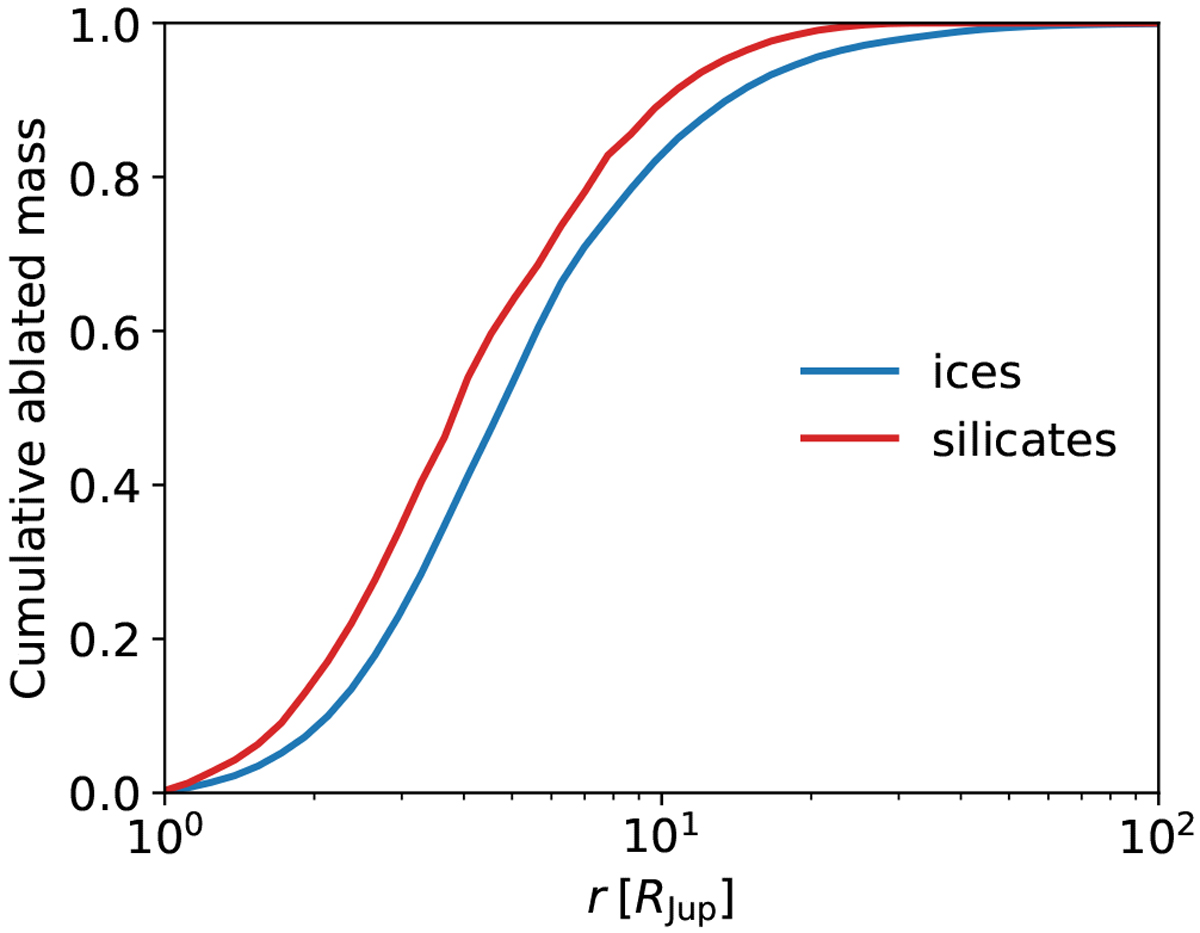Fig. A.1

Comparison between the distribution of material ablated from the surface of 100 km sized planetesimals, considering ablation of water ice (blue curve), or silicates (red curve). For the silicates, we adopted the following parameters, Ls = 5 × 106 J kg–1, and log Pv = 13.176 − 24 605.0∕Tpl (which isappropriate for enstatite; Cameron 1985). The silicates are slightly more difficult to ablate than water ice, hence depositing material a bit closer to the planet. We note however that differentiated planetesimals would most likely be composed of hydrated minerals which are weaker than the silicates we have considered here (e.g., Fegley 2000), which would bring the silicate curve closer to that of water ice. After a hundred planet’s orbit, in the case of silicates, we find that the equivalent of ~20% of the mass initially present in the feeding zone of the giant planet has been delivered in the CPD through ablation, compared to ~25% in the case of water ice.
Current usage metrics show cumulative count of Article Views (full-text article views including HTML views, PDF and ePub downloads, according to the available data) and Abstracts Views on Vision4Press platform.
Data correspond to usage on the plateform after 2015. The current usage metrics is available 48-96 hours after online publication and is updated daily on week days.
Initial download of the metrics may take a while.


